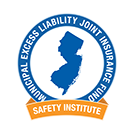Pedestrians
A successful pedestrian safety program requires constant effort and cooperation between all levels of government. Each year, approximately 70,000 people are injured and 4,650 are killed in pedestrian accidents. Children and senior citizens are involved in a disproportional number of these cases. Pedestrian accidents are more frequent in urban areas but are more likely to be fatal in rural areas.
“Walk the Walk” details the causes of pedestrian accidents and the strategies local and school officials can utilize to address these issues. Any governmental entity may download and use this video.
Intersection mishaps are the most common pedestrian accident. Senior citizens are especially vulnerable because they may not cross the street as quickly and often fail to notice vehicles in turning lanes. Children are more prone to midblock accidents, especially where parked cars are present. Alcohol is a frequent factor in accidents where the pedestrian was struck while walking along a roadway.
Increased speeds put pedestrians at higher risk. If a car traveling 20 mph hits a pedestrian, there is a 95% chance that the pedestrian will survive. However, the survival rate decreases to 45% at 30 mph and less than 10% at 40 mph. Reducing speeds, especially where pedestrians concentrate in residential and business districts must have a high priority in any pedestrian safety campaign.
To be successful, a safety program must include four basic elements, known as the four E’s: Evaluation, Engineering, Education and Enforcement.
Seniors
To be effective, a community safety program must also include outreach to senior adults. Physical changes in older individuals make them more vulnerable to injury and reduce their chances to recover.
- Slips and Falls | More than one third of adults 65+ fall each year, and falls are the leading cause of injury deaths among seniors. Falls are also a major cause of disabling injuries that permanently restrict the mobility of seniors. Each year, almost 2 million seniors are treated in emergency departments for nonfatal injuries from falls, and more than 400,000 are hospitalized. Rates of fall related deaths have increased significantly over the past decade.
- Motor Vehicles | Today’s seniors are mobility-minded and elect to drive longer. However, some older drivers are unable or unwilling to assess their driving capabilities.
- Pedestrians | Seniors account for 18% of pedestrian fatalities, and have the highest rate of any age group. Seniors often have difficulty hearing or seeing cars, and are especially vulnerable at intersections because they need more time to cross the street.
- Suicide | Suicide among the elderly is becoming an increasing problem and high rates of alcohol involvement have been found among individuals who commit suicide.
- Fire | Older adults suffer twice as many fire deaths as the general population. People 85+ are four times as likely to die in a fire as other groups. When a fire starts, the elderly are likely to need more time to escape from a fire area, and may need the assistance of others to do so.
Addressing the Issue
Begin by compiling the accident rates for your community and talk to the police, fire, ambulance and health departments about the issue. Reach out to senior groups and seek their views on these questions. For example, are there particular intersections that need safety improvements to accommodate the needs of senior adults? Where should sidewalks be improved? What other services can the community provide seniors?
There are numerous organizations that provide educational material including the Brain Injury Alliance, the Center for Disease Control (CDC), the National Highway Traffic Safety Administration and many others.
Playgrounds
Over 200,000 injuries are reported each year on playgrounds in the United States. The Consumer Product Safety Commission (CPSC) developed the Public Playground Safety Handbook which has been adopted by New Jersey.
Bicycle Safety
There are numerous rules and regulations for bicycle safety in New Jersey.
Please visit these websites for details:
- NJ DOT -Title 39 Motor Vehicles and Traffic Regulation Laws
- NJ Bike & Walk Coalition – Safe Passing Law Resource Center
- NJ Division of Traffic Safety – Bike Helmet Law
Bicycle safety now includes risk management for electric bicycles and scooters. Click here for the latest Safety Director Bulletin.
Municipal Excess Liability Joint Insurance Fund
9 Campus Drive, Suite 216,
Parsippany, NJ 07054
Phone: 201.881.7632
Fax: 201.881.7633
mel@permainc.com
© Copyright 2025 | Municipal Excess Liability Joint Insurance Fund | All rights reserved


